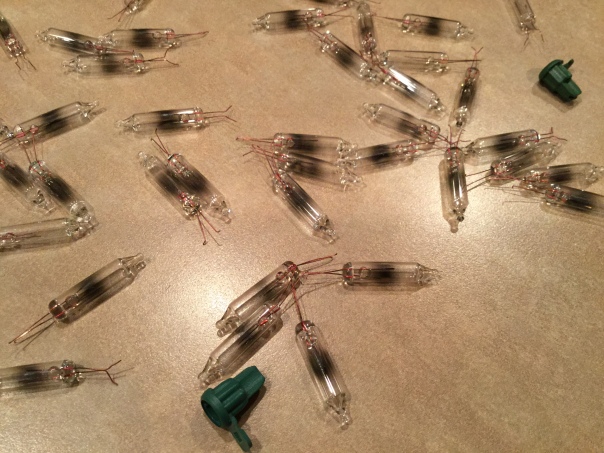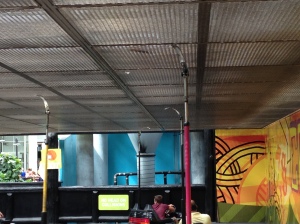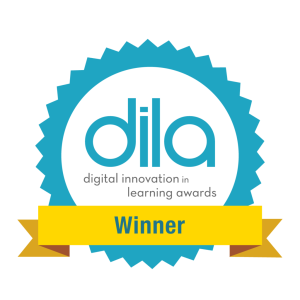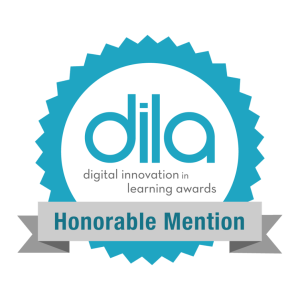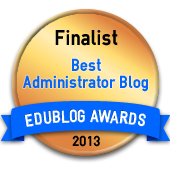Blog Archives
NAESP National Panel on Innovation
We’ve got an NAESP National Panel planned with some spectacular surprises. Join us for a conversation about innovation and connectivity in education. To get to know the presenters before the conference, simply click on the image above or download the DAQRI augmented reality app on a mobile device. (Just hover over the flyer while in the DAQRI app to launch into a 4D experience!)
Date: Wednesday, July 1, 2015
Time: 2:00pm – 3:15pm
Location: Long Beach Convention Center, Room 201B
Presenters Include:
Can’t travel to NAESP in Long Beach? Watch for a Periscope link via Twitter to join us virtually!
Our Collective Responsibility
We have an obligation to our students to invest in digital connections. They are counting on relevance and our connectivity as educators will facilitate the systemic transformation that’s of critical importance. Isolation in education is a choice and it is NOT best for kids.
This past week I spent several hours replacing a section of lights on our family’s Christmas tree. Each burned out bulb required removal and some intricate rewiring…which necessitated a lot of searching amidst the artificial branches laden with clusters of needles and burned out bulbs.
When all was said and done, I triumphantly summoned my wife to view the grand re-lighting of our Christmas tree. As I plugged each successive string of lights back into the socket I beamed with pride. It worked…all of the lights were back on. Then my wife pointed out a blaring discrepancy. The 50+ lights I had toiled to replace were completely different than the tree’s original bulbs. How could I have missed it?!
I took a step back to confirm what she noticed immediately. I had been so immersed in the work of replacing an individual section of bulbs that I had isolated my focus on one section of the tree to the detriment of the whole.

Many analogies could be drawn here, but I equate this experience to our educational system. It is critical that we work together and take time to connect and collaborate with stakeholders working in different states and capacities. The quality of education we provide each and every student is our collective responsibility. When educators connect kids win.
A system-wide paradigm shift is desperately needed. The utility of an antiquated pedagogy and misguided assessment practices must also be reexamined. Yet for each school or state that is entrenched in the status quo, there are countless others committed to real change; high achievement, creativity, and connectivity for each and every student.
It’s not about how brilliant any one classroom or school shines. Our students deserve a system that serves them well and illuminates the path to being #FutureReady. We can’t realize a paradigm shift working in isolation.
Educators and school leaders MUST cultivate the characteristic of “connectivity” to help realize real change and relevance. Our kids are counting on us to tap into the brightest and most abundant resource available; each other.
Call to action: Commit to cultivating skills for the digital age using digital tools to collaborate. Set-up a Twitter account and leverage it for professional learning. Reflect upon the degree to which you’re providing learning experiences for students congruent with the tools and technology they are exposed to outside of school. If you’re already serving as a “connected educator,” provide support to a friend that has not connected yet.
Maximum Impact
There’s no other way for me to say this…being a Connected Educator has transformed my life and thinking. Using tools like Twitter and Voxer to collaborate with people across the planet has been one of the most exhilarating and humbling endeavors of my life. The energy and co-mingling between my Personal Learning Network (PLN) and colleagues at school helps me deliver a maximum impact for kids.
At a recent family trip to the Mall of America, I was struck by the obvious reliance a bumper car has on the network of metal grates in the ceiling; my PLN is like an unceasing and conductive ceiling constantly sparking my learning.
The AMAZING staff and team we have at our school fuels a collective effort to make a difference for each and every child…together we’re able to handle the bumps and detours that are inherent in any innovative learning organization.
Most bumper cars rely on a conductive floor AND ceiling (each with differing polarities). The pole at the top of a bumper car touches the ceiling, while the contacts on the floor complete a powerful circuit. The resulting connection is rather effective…and tons of fun!
- Where do you get your energy and “spark” from?
- How are you able to make a maximum impact for kids each day?
- How do you remain relevant?
- Who inspires you to collaborate and grow?
We need to be constantly evolving and growing because our students’ world is changing. Our kids deserve relevant educators. There’s a world of collaborative educators out there willing to help…be sure to complete the circuit!
Together We’re Better for Kids

I rely on my PLN to share innovative ideas about pedagogy and opportunities for students. I took this photograph of a MakerBot while attending ISTE 2014.
Being connected on Twitter, Voxer, etc. has been a powerful supplement to the relationships I cherish with the dedicated teachers in our school. In fact, the connections we’re cultivating that started out on Twitter have had a direct impact on our students.
Our school has had a core group of teachers collaborating the past year on 21st century learning spaces to promote student engagement, creativity, and innovation. Staff have conducted site visits at other schools and met after school to collaborate on a regular basis. Their work has been inspiring, and I could go on for days about how phenomenal our team is.
As part of our conversations we have discussed bringing a MakerSpace to our school. The purpose of these conversations and a potential MakerSpace has been centered on cultivating an ethos of student learning made possible through passion-based learning, experimentation, creation, risk-taking, failure, and design iteration. I learned about the MakerSpace concept via my Personal Learning Network (PLN).
My connections on Twitter equipped me with additional research on MakerSpaces and 3D printers to contribute to the conversations. Drew Minock, a friend in my PLN that I met via Twitter, took time to explain how he wrote a DonorsChoose.org grant for a 3D printer in his classroom. We spoke a couple times via the telephone until I was ready to work with teachers interested in writing a grant in our school. We submitted a grant and our project is now fully-funded! Members of my PLN helped spread the word and retweeted project information. We even had several people that I only know through Twitter donate to our students. The process has been humbling!
Twitter has been a game-changing tool that empowers educators to forge supportive, student-centered relationships with one another from anywhere on the planet. Twitter was the primary tool I used to connect to research about MakerSpaces and 3D printers. Twitter was how I learned about DonorsChoose.org. Twitter connected me to caring parents and educators across the country that also wanted to support students and our 3D printer project. However, this story isn’t really about Twitter; it’s about what some of these connections will mean for our students. When school starts this fall, our students will have an unbelievable opportunity to innovate using cutting-edge technology.
Together we are better for kids, and our students are the ultimate winners when educators collaborate within and across classrooms, schools, and states! Our MakerSpace project would not have been possible without an AMAZING team of educators at Greenwood Elementary…and the positive power of PLN.


